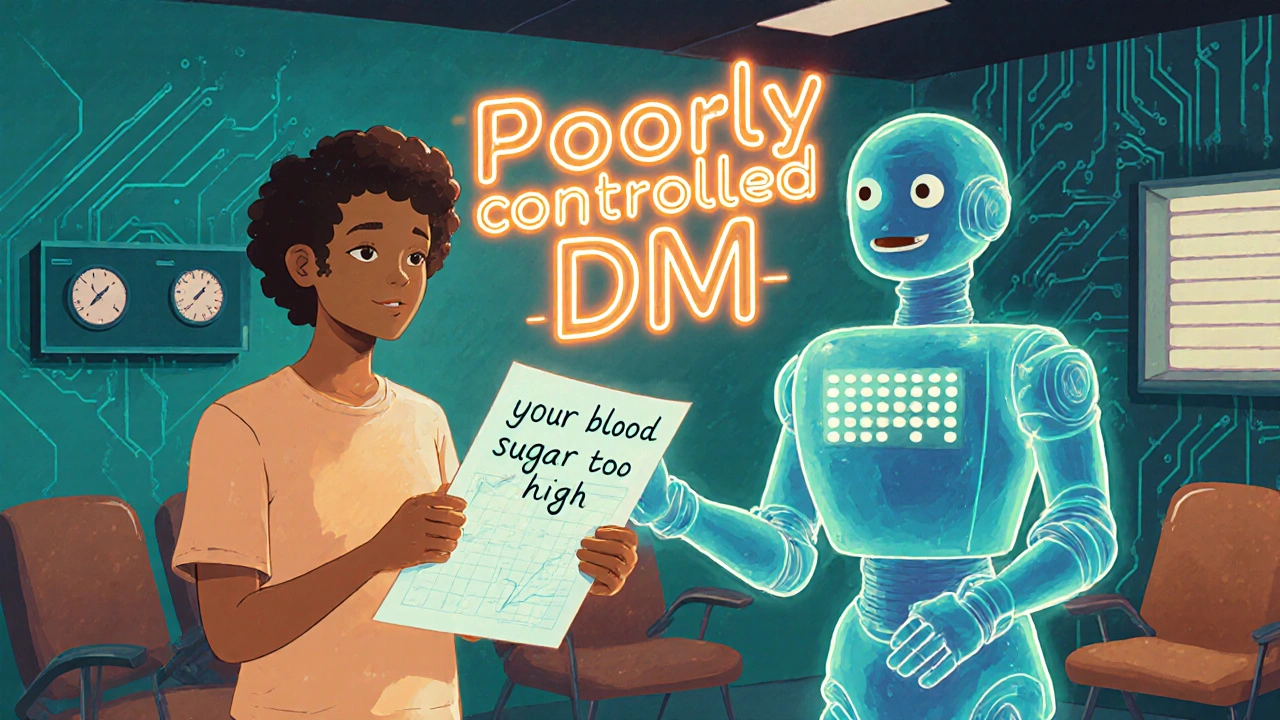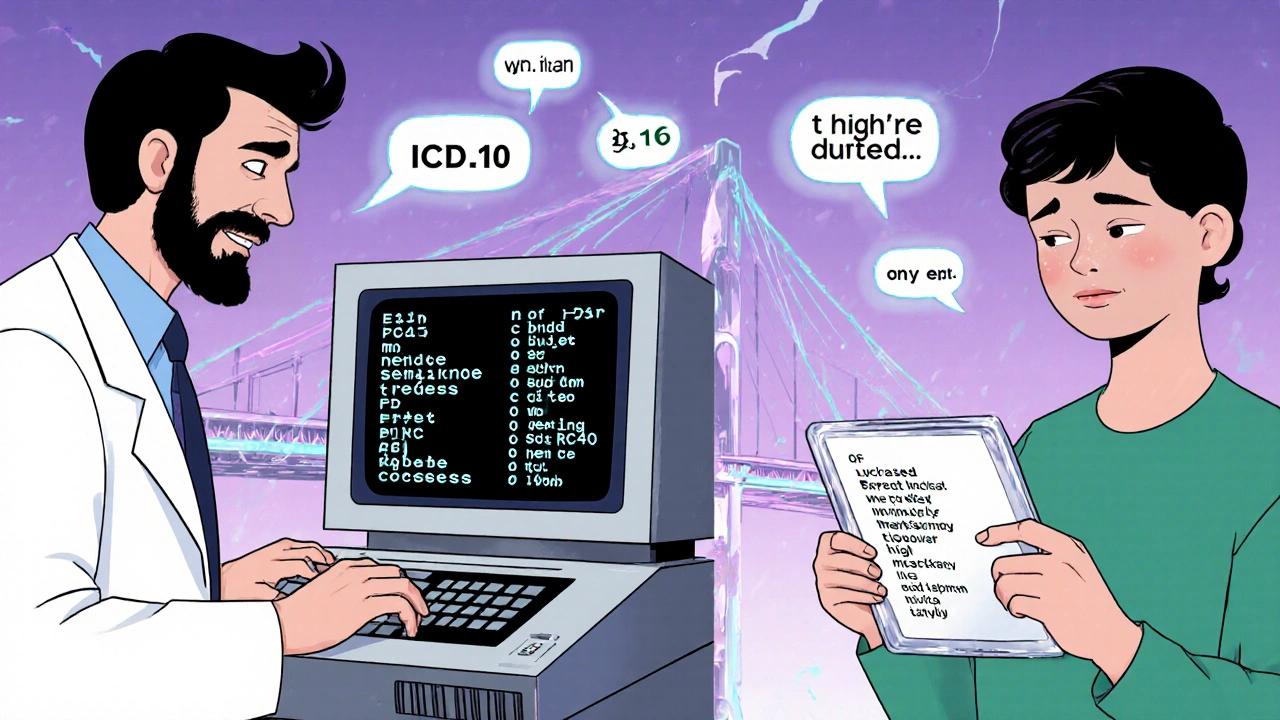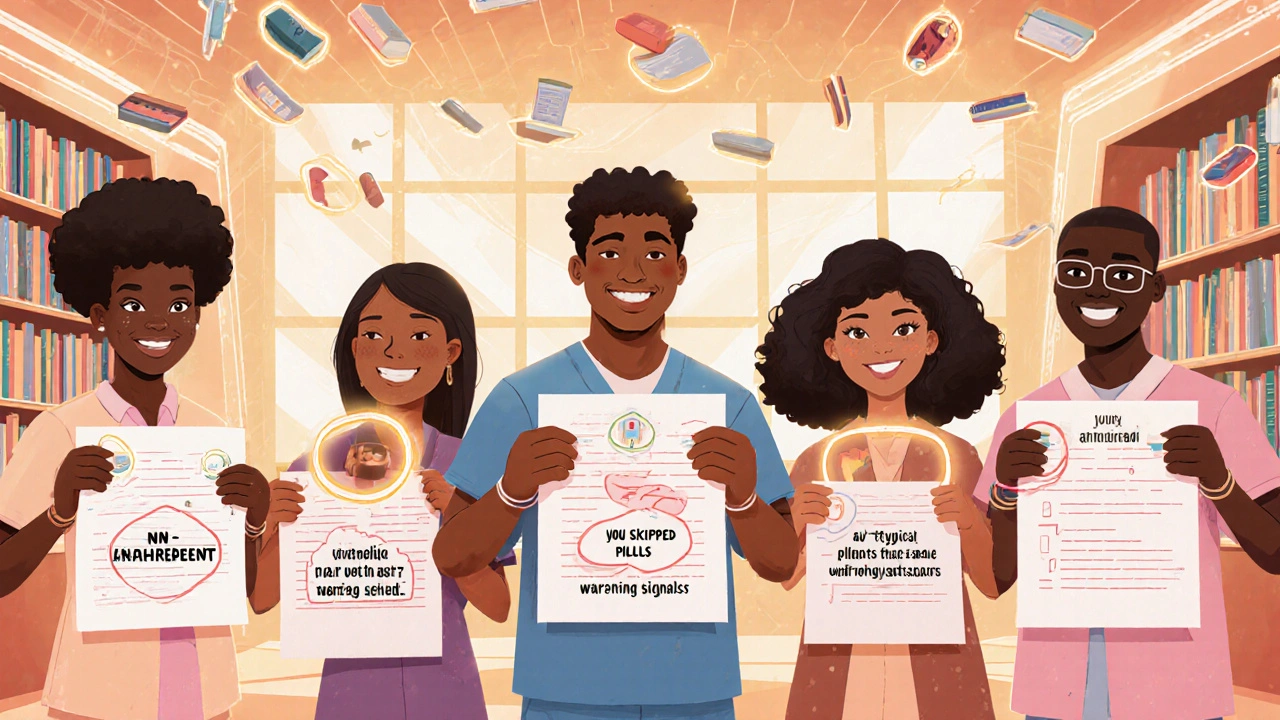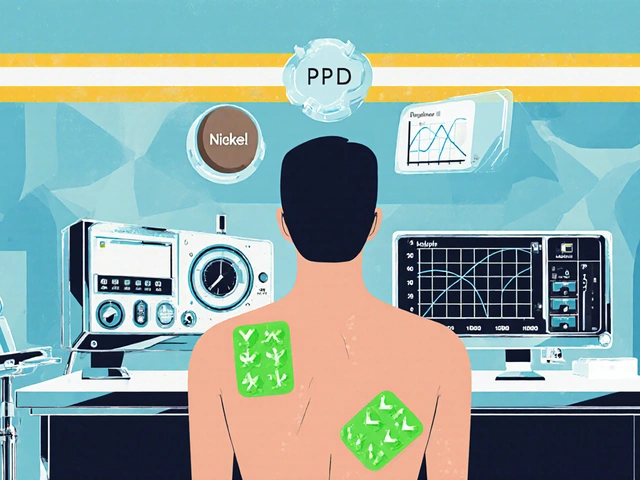
Imagine you leave your doctor’s office with a note that says "poorly controlled DM". You might think you’re being judged - maybe you’re not trying hard enough. But what your provider meant was "your blood sugar is too high most days". This isn’t a typo. It’s a language gap. And it’s happening every day in clinics, hospitals, and patient portals across the U.S.
Why the Same Condition Has Two Names
Healthcare providers use standardized codes to document what’s wrong. You’ll see terms like ICD-10 code E11.9 for Type 2 Diabetes, or CPT code 99213 for a routine check-up. These aren’t meant for you. They’re for billing, research, and insurance claims. The system was built to track disease patterns, not to help you understand your own body. Patients, on the other hand, describe symptoms in plain language: "I’m always tired," "I drink water all day and still feel thirsty," "I get dizzy when I stand up." These aren’t just stories - they’re critical clues. But when providers write them down in medical jargon, the meaning gets lost. A 2019 study in the Journal of General Internal Medicine found that 68% of patients didn’t understand common medical terms. Hypertension? 42% thought it meant something else. Colitis? 61% had no idea what it was. Meanwhile, providers keep using these terms because they’re efficient - and required by law.The Systems Behind the Labels
Behind every electronic health record (EHR) like Epic or Cerner is a machine built for efficiency, not clarity. These systems rely on ICD-10 (70,000+ diagnosis codes) and CPT (10,000+ procedure codes) to make sure hospitals get paid. It’s not about your experience - it’s about compliance. Health Information Management (HIM) professionals are the bridge. They’re trained to translate between these worlds. They spend over 1,200 hours learning how to code a patient’s fatigue as "R53.83: Other fatigue" while also making sure the patient understands that this code means "your body is worn out". But here’s the problem: most patients never see the coded version. They see the clinical note - the one typed by the doctor during the visit. And if that note says "non-compliant with metformin", the patient hears "you’re not following orders." They don’t realize the provider meant "you skipped doses because the pill made you sick."When Labels Cause Harm
This isn’t just confusing - it’s dangerous. Dr. Thomas Bodenheimer from UCSF says language gaps contribute to 30-40% of medication errors. A patient might stop taking insulin because their chart says "non-adherent" and they feel ashamed. Another might ignore chest pain because their note says "atypical chest discomfort" - they think it’s not serious. The Institute of Medicine found that communication failures are behind 80% of serious medical errors. That’s not bad luck. That’s a system design flaw. One patient on PatientsLikeMe wrote: "My doctor wrote 'poorly controlled DM.' I thought I was failing. I didn’t know it was just a label for high blood sugar. I stopped going to appointments because I felt guilty." And it’s not just patients. Doctors are tired too. A 2023 Medscape survey showed 64% of physicians spend 15-30 minutes per visit just explaining what their own notes mean. That’s half the appointment gone - time that could’ve been spent on treatment, not translation.
What’s Being Done to Fix It
The good news? Change is happening. In 2016, the 21st Century Cures Act forced providers to give patients access to their clinical notes. By 2021, it became law: you have the right to see everything - no filters. That meant hospitals had to start rewriting notes for people who aren’t doctors. Kaiser Permanente started Open Notes in 2010. Today, 2.7 million patients can read their doctors’ notes. Results? 27% less confusion about diagnoses. 19% better medication adherence. Mayo Clinic went further. They built EHR templates that auto-translate: "myocardial infarction" becomes "heart attack" in patient-facing documents. Their pilot cut patient confusion by 38%. The WHO’s ICD-11, rolled out in 2022, now includes patient-friendly descriptions alongside clinical codes. For the first time, a diagnosis code comes with a plain-language explanation. And HL7 FHIR - the new standard for sharing health data - lets systems show both versions side by side. A provider sees "E11.9". You see "Type 2 Diabetes". Both are correct. Both matter.What You Can Do Right Now
You don’t have to wait for the system to fix itself. Here’s how to take control:- Ask: "Can you say that in plain English?" No shame in it. Providers expect it.
- Use the "teach-back" method: After they explain something, say, "So, if I understand right, this means..." Then repeat it back. Studies show this cuts miscommunication by 45%.
- Check your patient portal. If your note says "poorly controlled" or "non-adherent", don’t assume the worst. Ask what it actually means.
- Write down your symptoms before your visit. Not in medical terms. Just how you feel. Bring that list. It helps your provider connect your story to their codes.

The Future Is Two Languages
The goal isn’t to eliminate medical terminology. It’s too useful for research, billing, and tracking disease trends. But it shouldn’t be the only language in your chart. By 2027, experts predict 60% of EHRs will automatically translate clinical notes into plain language - right inside the portal. AI tools like Google’s Med-PaLM 2 can already convert jargon with 72% accuracy. It’s not perfect yet, but it’s getting close. The real win? When your doctor writes "your blood sugar is high" - and you know exactly what that means - without needing a decoder ring. This isn’t about making medicine simpler. It’s about making it fairer. Your experience matters. Your words matter. And you deserve to understand what’s written about you - not guess at it.Frequently Asked Questions
Why do doctors use medical terms I don’t understand?
Doctors use medical terms because they’re part of a standardized system used for billing, insurance, and research. Codes like ICD-10 and CPT help hospitals get paid and track health trends. But these terms aren’t meant for patients. They’re designed for efficiency, not clarity. The problem isn’t that doctors are being secretive - it’s that the system hasn’t been built to explain things to you.
Can I ask my doctor to rewrite my medical notes in plain language?
Yes, and you should. You have a legal right under the 21st Century Cures Act to see your full medical record - including notes. If a note says something confusing like "non-compliant" or "poorly controlled," ask for clarification. Many providers now use plain-language templates, especially in systems like Epic and Cerner that support patient-friendly views. You can also request a simplified version of your summary after your visit.
What’s the difference between ICD-10 and patient-friendly labels?
ICD-10 is a coding system with over 70,000 medical diagnosis codes used by providers and insurers. For example, "E11.9" stands for "Type 2 Diabetes Mellitus without complications." A patient-friendly label would say "Type 2 Diabetes" or even "high blood sugar." Newer systems like ICD-11 now include both versions side by side. The goal is to keep the code for professionals and the plain version for you.
How do patient portals like MyChart help with this problem?
Patient portals like MyChart now show clinical notes directly to patients. About 76% of Epic users have access to their notes. Many health systems are updating these notes to use simpler language - for example, changing "hypertension" to "high blood pressure" or "colitis" to "inflammation of the colon." Some even add pop-up definitions. This transparency helps patients understand their conditions and feel more in control of their care.
Is there a way to make sure my doctor understands my symptoms correctly?
Yes. Before your visit, write down your symptoms in your own words: "I feel dizzy when I stand up," "I’m always tired," "I’ve lost 10 pounds without trying." Bring that list. During the visit, use the "teach-back" method: after your doctor explains something, repeat it back in your own words. This helps catch misunderstandings early. Studies show this reduces errors by 45%.




